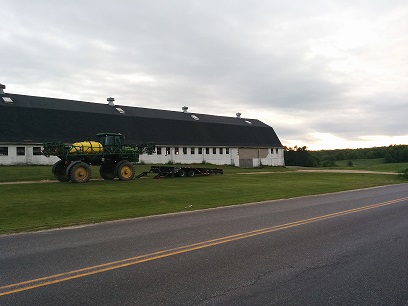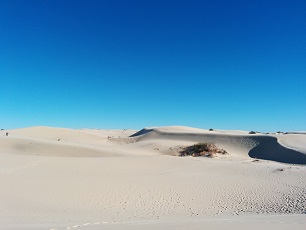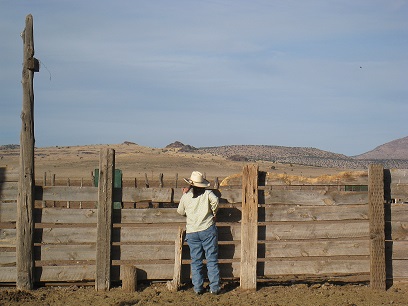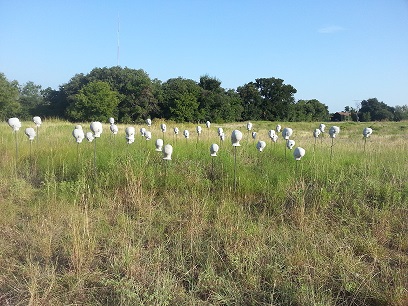A Meditation on Rural America
Elyssa Ford
Northwest Missouri State University
On two separate trips in the last year, I drove through 26 of the American states, and in doing so, I saw a lot of rural America. The 2010 U.S. census records that 80.7% of the population lives in urban areas while only 19.3% in rural ones and that over half of the population lives in just 146 counties (out of more than 3,000 counties in the country).[1] These numbers reveal a certain, stark picture about America, its population, and the tenor of life here, and yet a drive across the country itself reveals a very different America. Instead of a place teeming with cities and densely clustered populations, I would venture to say that America remains rural at its core.
Not only is most of America in fact rural, but that rural background continues to impact people’s lives today. Perhaps this can be tied back to the early founding of this country with Thomas Jefferson and his vision of the yeoman farmer. As historians we love to make connections like this, and we often try to see the bigger picture, at times tied to lofty ideals. In reality, however, we have all seen the late night shows when “people on the streets” (urban streets, it should be noted) are questioned about their political knowledge, historical knowledge, and knowledge of current events, and then we all laugh – more in horror than amusement – at how little it seems our population really does know. As such, any continued, modern day connection to a rural past probably does not hinge on a national understanding of that history. So what can explain this? The answer is complex, multi-part, and likely is not much of a definitive answer at all, and yet I will make an attempt. As this is a meditation on rurality and rural America, my answer also will lead into tangents and down other paths of thought related to rural life.
For some Americans, the tie to the land is a recent one, a lived experience within their own lives or their family histories. There has been a recent exodus from parts of the Midwest, stretching from Iowa to the Dakotas, down to much of Texas. People flee their rural upbringings for college in more populated settings and then often remain in those new areas for jobs. This rural-to-urban movement is not always the case, though. I teach at a small school in rural Missouri. The town’s population is less than 10,000 if we do not include the students, and we are surrounded by corn and soy fields on all sides. For many of our students, it is the largest place they have lived and perhaps even encountered. A number of students plan on returning to their even more rural and often agricultural roots after graduating. Those who do often see themselves in the agricultural field, and we have a large agriculture school to facilitate that work and future. For many others, they make Maryville their new, permanent home or begin to make the transition from the more rural to Maryville and eventually to the regional hubs of Omaha or Kansas City. In some ways, we are this middle ground between the rural childhoods of these students and their often more urban futures.
There is a real irony in this because as a regional school, we draw on the surrounding, primarily rural population for students, but as we educate them, we also are pushing these students to jobs often in more populated places, ones further afield, which contributes to the continued drop in the local, rural population and, thus, our potential student body in the future. In this way, it is clear that we as educators are playing – however unintentionally or subconsciously – a role in the physical transformation of the country. Yet even if our students do leave their rural homes, these same students often retain a connection to that past and to their homes and families there. For some, there might be a return later in life to those rural communities, which they see as safer and more family oriented. The question is, how long will that connection remain? Will it extend through generations, or over time will some of the ties that historically have been lived and felt with and to rural America still be there?
In some ways, we have worked in this country to consciously retain these ties to rural America. This often is done in a way that shows the rural as historic – think living history sites, which often are rural in focus and use farms as a setting. Children are taken to these farms and allowed to interact with animals, see old farming techniques, and get a turn at churning butter. This usually is a good experience for them, and it does help create a rural connection and a better understanding of the past, but it also is problematic because we have the “rural” portrayed as this rather mysterious and clearly historic place that you go to visit before returning to the more populated “modern” and “real” world.
Thus, we have created ties to rural America for people today who do not live in that space, but it is a very constructed version and rarely allows for a modern vision of what rurality can mean today. In that version the rural is historic, it is usually connected to just farming, and it allows for little evolution over time. In contrast, growing up in a rural area, living and teaching in another rural area as an adult, and driving across much of the United States today provides a different version.
While many views of rural American (or rural anywhere) are tied to farming, that is an inaccuracy. Living rural, especially today when large corporations control much of the planting in this country, rarely means farming, at least not the small-scale, family farms we often envision when we think of a farm. In fact, even my university students who come from farms know almost nothing about farming food to be eaten. They have expensive combines and harvesters that receive the latest pricing data and can shut down when prices drop, and the farms are growing not for local grocery stores but for million and billion dollar companies that produce ethanol. This is rich soil and valuable land, so valuable that few of the families who farm can afford to own the land itself. The land owners are often absentee, instead living in apartments in places like Chicago. Likewise, despite the rich soil, ideal for growing food crops, you have to drive almost an hour to get to a farmer’s market because you make money not on growing food but on growing corn and soy for commercial products. This is farming, and it is rural America, but it is not the version that we promote, and it is not one that we always understand. For someone who arrived in the Midwest only four years ago, I am still trying to figure out how to think about this.
My own experience with the rural as a child was something quite different and was one not at all connected to farming. For many, farming is not the reality of rural life. As someone from Texas, the rural often meant not the farming of crops but the raising of animals, specifically goats or cattle. It was ranching country. Just as historic farms showcase one version of rural, farming America, the rodeo enshrines the vestiges of ranching in the halls of the American memory. And while the show Oklahoma may have led us to believe in the dual, rural nature of the farmer and the rancher, rural life is, of course, not so simple.
For my family, it meant a place to live separately, to not conform to society’s expectations, to have a place to be artistic and expressive. Rather than fields of crops, there were and still are ever-changing and expanding fields of art installations. To the left is my father’s most recent project – impact waves made of castings of my sister’s head. Like farmers and ranchers, we too are using the land and leaving an impact there. Our livelihood depends on that same rural space, just used in a different way.
This may not be the traditional or standard image of rural America, but it is still one that exists. And there are many others. Much of America is still rural, and the people who live there engage in many different activities – and they are people of today, not historic relics of the past. In undertaking a closer and also a broader look at rural America and rural Americans – past and present – we can gain a better understanding of this country and of its people. Sometimes, seeing that version of America can be as simple as just getting in your car and driving. No matter where you live, it probably will not take more than thirty minutes to escape the urban and suburban to enter the rural. Go take that drive and look around – and be sure to really look while you are there.
See the most recent issue (August 2015) Pacific Historical Review for Elyssa Ford’s article on female pa‛u riders. These women in Hawai‛i use this historic riding technique to celebrate a fading rural past and to debate racial and ethnic relations within the region: http://phr.ucpress.edu/content/84/3/277.
[1] Census data: https://ask.census.gov/faq.php?id=5000&faqId=5971. County data: http://www.businessinsider.com/half-of-the-united-states-lives-in-these-counties-2013-9.




